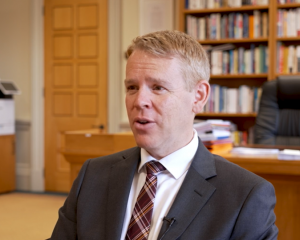
If the "Yes" vote wins on October 17, do not expect a sudden rash of assisted deaths in New Zealand.
For a start, the Bill would not come into effect until 12 months later.
Secondly, the architect of the proposed law change, Act New Zealand leader David Seymour, was careful to put several safeguards against potential misuse of the legislation, and through the extensive debate on the issue, his fellow politicians proffered several more.
Some argue the strictures are too restrictive and will mean the option to seek assisted dying will not be readily available for those who wish to use it; others believe it does not go far enough to protect the vulnerable.
If New Zealanders vote "yes", how will the system work?
Who?
To receive assistance to die, a patient must meet all the criteria.
They must be:
■ 18 or over;
■ A citizen or permanent resident of New Zealand (to avoid so-called "suicide tourism");
■ Suffer from a terminal illness likely to end their lives within six months;
■ Be in an "advanced state of irreversible decline";
■ Suffering in a way they consider intolerable;
■ Competent of making an informed decision.
The law states being disabled, mentally ill or old cannot be given as the sole reason to apply for assisted dying.
Being competent to make such a momentous decision requires being able to understand what assisted dying is, being able to retain, weigh up and use that information, and then communicate one’s decision.
If?
The patient must tell their attending medical practitioner — who can conscientiously object if they wish — that they want assistance to die.
If the doctor has a conscientious objection, a replacement can be called in.
It must be the patient’s own free choice: neither the medical practitioner nor anyone else can make that suggestion, and the practitioner must stop the process if they believe anyone is putting pressure on the patient.
The practitioner must give the patient a prognosis of their illness, ensure they understand assisted dying and what other options they have, that they know they can change their mind, and ensure the patient has discussed their wishes with anyone they might wish to — although the patient is able to not seek counsel from anyone if they so choose.
The patient, or someone else if they are unable to write, must then fill in a form, as must the practitioner.
An independent medical practitioner must then be brought in who will read the patient’s file, examine them, and reach the same conclusion as the first practitioner.
If there are any doubts on behalf of either practitioner that the patient is not competent to make the choice they have, a psychiatrist must examine the patient and then reach an opinion on their ability to make their choice.
If they decide they are not, they are not eligible for assisted dying.
Advance directives — written instructions authorising euthanasia — are not permitted under the law.
Nor can a person with power of attorney over the patient make any decision on their behalf under the Act.
How?
Four methods of assisted death are provided for in the legislation:
■ Ingestion, triggered by the patient;
■ Intravenous delivery, triggered by the patient;
■ Ingestion through a tube, triggered by an attending practitioner;
■ Injection administered by a practitioner.
When?
The patient decides both the method and the time when they will be assisted to die.
At that time the patient must again be asked if they wish to die, die on another day not more than six months later, or not die at all.
If they choose to die, the chosen procedure goes ahead; if not, the drug is immediately removed and destroyed if no longer required.
If the procedure does go ahead, the practitioner must file a report detailing all the circumstances of the death.
Oversight
The Act sets up two independent organisations and one role within the Ministry of Health to monitor and administer the law.
A registrar will be appointed by the ministry to check processes have been followed in all cases, and notify a practitioner if a patient wishing to die has met all the eligibility criteria.
The registrar will handle and refer any complaints, and must report to Parliament annually.
The Support and Consultation for End of Life in New Zealand (SCENZ) group will be set up by the Director-general of health.
It will make and maintain a list of practitioners willing to assist a patient to die, examining psychiatrists, and pharmacists prepared to dispense the required drugs.
The Minister of Health will set up an End of Life Review Committee.
Comprising a medical ethicist, a doctor who is a specialist in end-of-life care, and one other health practitioner, the committee will review practitioner’s reports and report to the registrar if any issues have arisen.
If the Act comes into force, the Minister of Health must review it within three years, and further reviews must be held every five years.
Comments
Our legislation we are putting to the vote, seems to based on a European (Belgium/Netherlands) model where over time, even pre-teenagers and teenagers suffering from depression are "taken care of" by 2 doctors. Do we want that here?
A 'Replacement' called in to cover c.o.? What does the NZMA say?
In a room with 2 or more doctors?
So, what's new?












